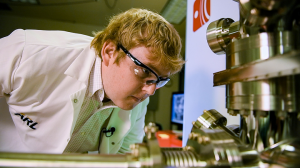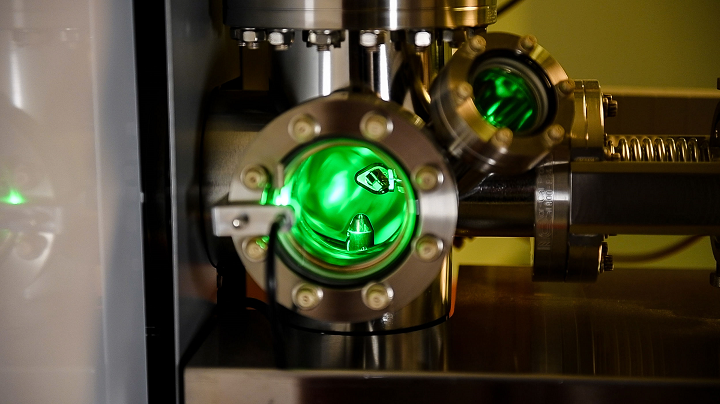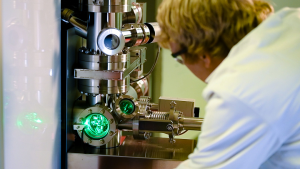Researchers at Texas A&M, working with scientists from Essentium, Inc., continue to refine 3D printing processes. Pinpointing one of the most vulnerable areas, the individual printed layers, the researchers and scientists have developed new technology for improving part reliability with plasma science and carbon nanotube technology.
 Upon the inception of 3D printing in the 80s with the SLA-1, such technology was primarily used for prototyping; however, in the past few decades, organizations like NASA , the military, and GE have begun to focus on fabrication of not only prototypes but also critical parts. The medical realm has been heavily impacted too. The area of prosthetics, for instance, is being completely transformed as groups like e-NABLE make it possible for individuals in need to receive affordable, completely customized limb replacements—around the globe.
Upon the inception of 3D printing in the 80s with the SLA-1, such technology was primarily used for prototyping; however, in the past few decades, organizations like NASA , the military, and GE have begun to focus on fabrication of not only prototypes but also critical parts. The medical realm has been heavily impacted too. The area of prosthetics, for instance, is being completely transformed as groups like e-NABLE make it possible for individuals in need to receive affordable, completely customized limb replacements—around the globe.
Users on every level are taking advantage of the benefits of 3D printing, from affordability and speed in production, to the ability to cut out the middleman and innovate at will—whether on the industrial level, or in the office or at home. For many, thermoplastics such as ABS and PLA are still the most popular choices for fabrication. Layer bonding and issues with mechanical properties are ongoing challenges for most users, and while a defective prototype can be easily dealt with, an industrial part that fails could be disastrous.
“Finding a way to remedy the inadequate bonding between printed layers has been an ongoing quest in the 3D printing field,” said Dr. Micah Green, associate professor in the Artie McFerrin Department of Chemical Engineering. “We have now developed a sophisticated technology that can bolster welding between these layers all while printing the 3D part.”
The research team released the details of their study in the recently published, ‘Dielectric Barrier Discharge Applicator for Heating Carbon Nanotube-Loaded Interfaces and Enhancing 3D Printing Bond Strength.’ Their paper highlights the need for increased tensile strength and ‘production-ready solutions.’
Using a dielectric barrier discharge (DBD) plasma electrode that can be mounted on the 3D printer for welding of parts, the researchers were able to create parts strong enough to compare with traditionally created injection-molded parts.
In coating layers with carbon nanomaterials, the researchers could apply heat, thus causing the 3D printed layers to bond cohesively.
“If you put something in an oven, it’s going to heat everything, so a 3D-printed part can warp and melt, losing its shape,” said Green. “What we really needed was some way to heat only the interfaces between printed layers and not the whole part.”
The researchers began working with Dr. David Staack, associate professor in the J. Mike Walker ‘66 Department of Mechanical Engineering, creating conductive materials to charge the surfaces of the 3D prints, continuing to heat the materials, and ‘weld’ the materials in place
“The holy grail of 3D printing has been to get the strength of the 3D-printed part to match that of a molded part,” said Green.
“In this study, we have successfully used localized heating to strengthen 3Dprinted parts so that their mechanical properties now rival those of molded parts. With our technology, users can now print a custom part, like an individually tailored prosthetic, and this heat-treated part will be much stronger than before.”
The primary author for the research is Dr. C. Brandon Sweeney, a former Texas A&M materials science and engineering student in Green’s laboratory. He is the head of research and development and cofounder at Essentium.
Other contributors of this research include Dr. Blake R. Teipel ‘16 and Dr. Bryan S. Zahner ‘14 from Essentium; Dr. Martin J. Pospisil ’19, Dr. Smit A. Shah ’19, and Muhammad Anas from the Texas A&M chemical engineering department; and Matthew L. Burnette from the Texas A&M mechanical engineering department.
What do you think of this news? Let us know your thoughts! Join the discussion of this and other 3D printing topics at 3DPrintBoard.com.
[Source / Images: Texas A&M University]
The post Texas A&M Researchers: Eliminating the Weak Spots in 3D Printing appeared first on 3DPrint.com | The Voice of 3D Printing / Additive Manufacturing.






